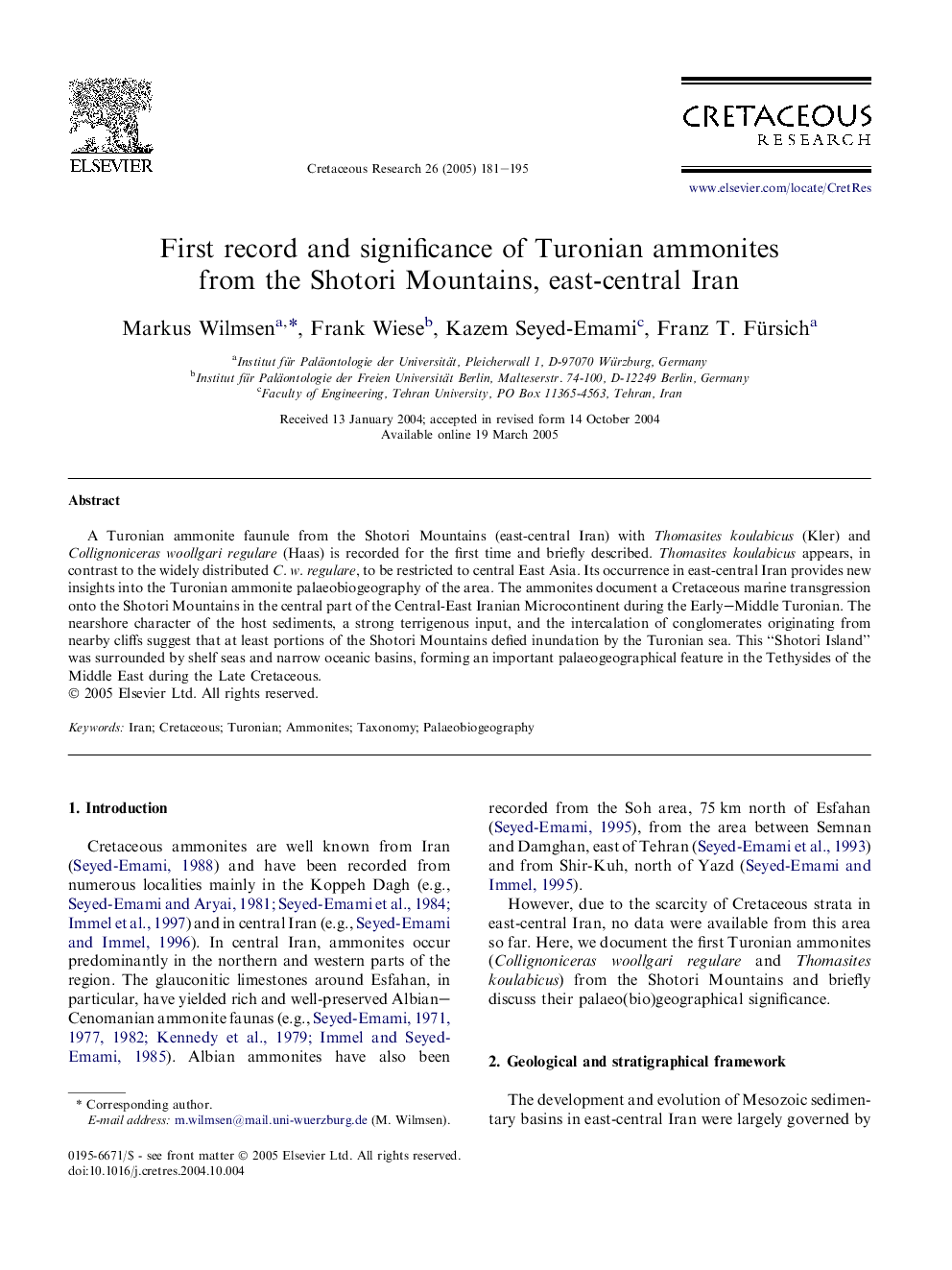| Article ID | Journal | Published Year | Pages | File Type |
|---|---|---|---|---|
| 9538945 | Cretaceous Research | 2005 | 15 Pages |
Abstract
A Turonian ammonite faunule from the Shotori Mountains (east-central Iran) with Thomasites koulabicus (Kler) and Collignoniceras woollgari regulare (Haas) is recorded for the first time and briefly described. Thomasites koulabicus appears, in contrast to the widely distributed C. w. regulare, to be restricted to central East Asia. Its occurrence in east-central Iran provides new insights into the Turonian ammonite palaeobiogeography of the area. The ammonites document a Cretaceous marine transgression onto the Shotori Mountains in the central part of the Central-East Iranian Microcontinent during the Early-Middle Turonian. The nearshore character of the host sediments, a strong terrigenous input, and the intercalation of conglomerates originating from nearby cliffs suggest that at least portions of the Shotori Mountains defied inundation by the Turonian sea. This “Shotori Island” was surrounded by shelf seas and narrow oceanic basins, forming an important palaeogeographical feature in the Tethysides of the Middle East during the Late Cretaceous.
Related Topics
Physical Sciences and Engineering
Earth and Planetary Sciences
Palaeontology
Authors
Markus Wilmsen, Frank Wiese, Kazem Seyed-Emami, Franz T. Fürsich,
